The Electronic Intifada 4 August 2015
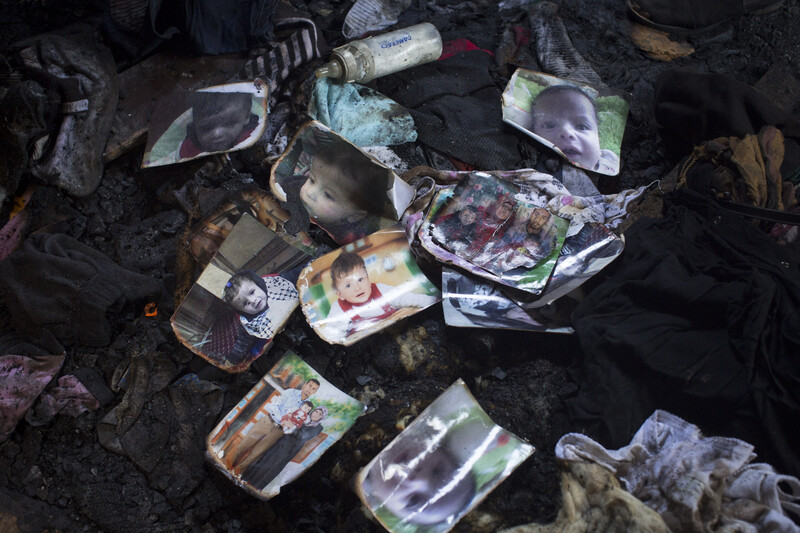
Family photos are displayed on the floor of the house of 18-month-old Palestinian baby Ali Dawabsha, who died when his house was set on fire by suspected Jewish settlers in the West Bank village of Duma on 31 July. Four additional family members were injured in the attack.
ActiveStillsDuring the month of July, Palestinians in the occupied Gaza Strip marked the first anniversary of Israel’s summer 2014 assault that left more than 2,200 dead, and victims were still being pulled from the rubble.
One year later, none of the more than 12,500 homes destroyed have been rebuilt and 100,000 residents remain displaced.
Gaza remains under tight siege, and Rafah crossing with Egypt — the only point of exit and entry for the vast majority of the Strip’s 1.8 million residents — remained closed throughout the month.
Palestinians in Gaza endured extreme summer heat with only a few hours of power per day last month as electricity supplies from Egypt were disrupted and Gaza’s sole power plant shut down because it was unable to pay taxes to the West Bank-based Palestinian Authority.
Israeli military forces continued to constantly fire on Gaza, killing 17-year-old Muhammad al-Masri in the northern town of Beit Lahiya on 31 July.
West Bank slayings
Israeli soldiers also killed several Palestinians in the occupied West Bank in July.
Laith al-Khalidi, 15, was shot in the back by a sniper in an Israeli watchtower at Atara military checkpoint near the city of Ramallah on 31 July.
The family of Muhammad Abu Latifa in Qalandiya refugee camp near Ramallah say that the 19-year-old bled to death after being executed on 27 July; the army claimed that the teen fell to his death while being chased by soldiers. Another youth from the camp, 17-year-old Muhammad al-Kasbeh, was shot dead after throwing a stone at an Israeli military vehicle on 3 July; security camera footage later showed that Israeli colonel Yisrael Shomer shot the boy as he ran away.
Muhammad Alawneh, 21, died on 22 July after he was shot with a live bullet to the chest during an Israeli raid on Birqin, a town near the northern West Bank city of Jenin.
Falah Abu Maria, 52, was shot in the neck and chest and killed while defending his son who was shot in the pelvis by Israeli soldiers who had raided their home in Beit Ommar village near Hebron at dawn on 23 July.
Palestinians in the West Bank and Gaza mourned the youngest victim of Israeli violence yet this year. Ali Dawabsha, 18 months old, was incinerated after suspected Israeli settlers set fire to his home and one other in Duma village in the northern West Bank on 31 July. The attackers left behind graffiti including a Star of David and the messages “revenge” and “Long live the Messiah King” on the walls.
Prisoners
At the beginning of the month, Israel was holding 5,442 Palestinian political prisoners and detainees, as well as nearly 1,000 Palestinians held for entering Israel ”illegally,” according to statistics compiled by the Israeli rights group B’Tselem.
Soon after Khader Adnan was released on 19 July following a 55-day hunger strike in protest of his detention without charge or trial, Israel’s parliament, the Knesset, passed a bill permitting the force-feeding of hunger striking Palestinian political prisoners. Prisoner Muhammad Allan was reported to be on his 48th day of hunger strike at the time of publication, and several other prisoners had embarked on open-ended strikes.
Meanwhile, United Nations Secretary-General Ban Ki-moon delisted Yarmouk refugee camp near Damascus from the world body’s tally of besieged areas in Syria even though the appalling situation on the ground there had not changed since April, when he described it as “the deepest circle of hell” in the war-ravaged country.
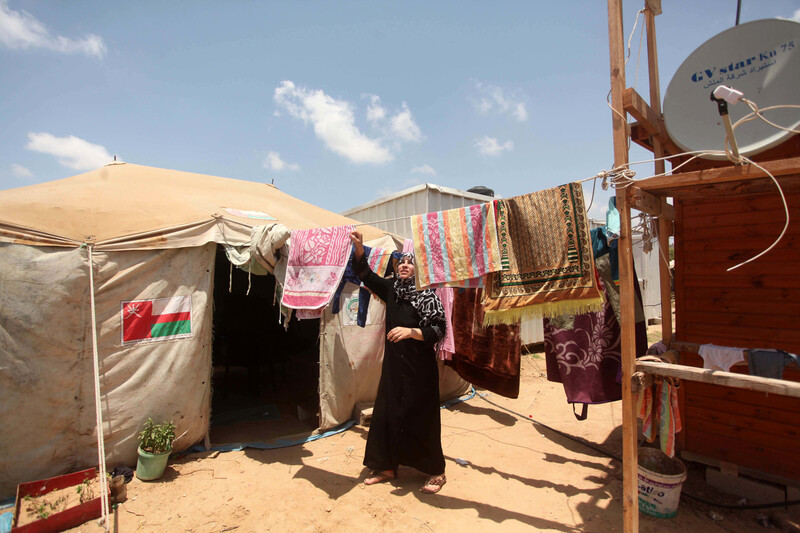
A Palestinian woman hangs laundry near the ruins of her house that was destroyed by Israeli shelling last summer, Khan Younis, southern Gaza Strip, 2 July.
APA images
Palestinians mark the first anniversary of the murder of 16-year-old Muhammad Abu Khudair, who was kidnapped from the Shuafat neighborhood of occupied East Jerusalem and burned alive by Jewish extremists in an act of revenge after the abduction of three young Israelis, 2 July.
ActiveStills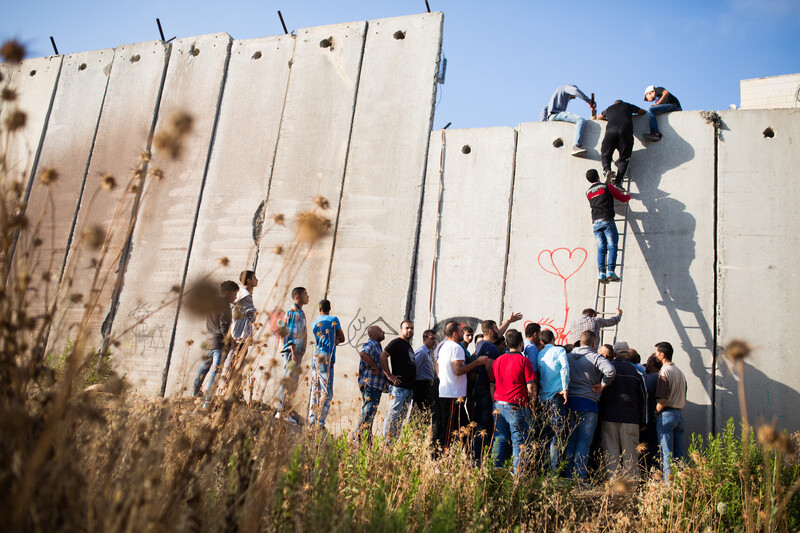
Palestinians climb over the Israel’s wall in the Jerusalem-area town of al-Ram attempting to pray at al-Aqsa mosque on the third Friday of Ramadan, 3 July.
ActiveStills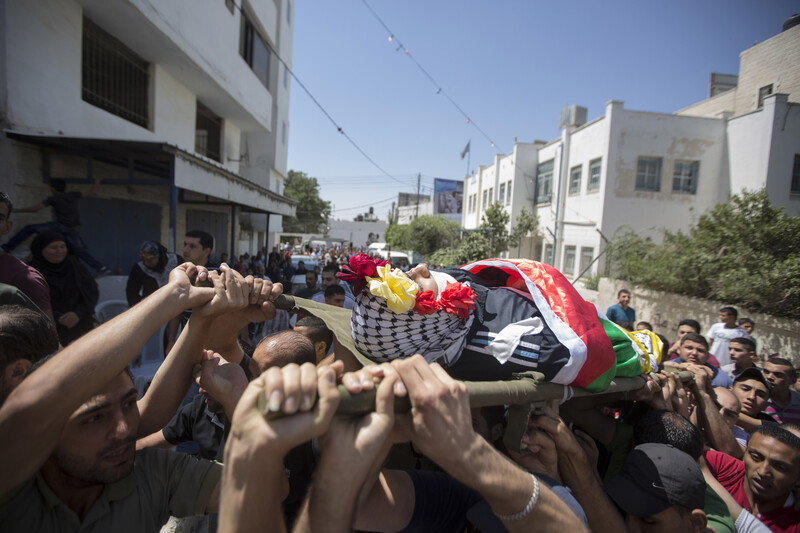
The body of Muhammad al-Kasbeh, 17, is carried at his funeral in Qalandiya refugee camp, near the West Bank city of Ramallah, on 3 July. Israeli colonel Yisrael Shomer shot and killed the teen as he ran away, security camera footage showed.
ActiveStills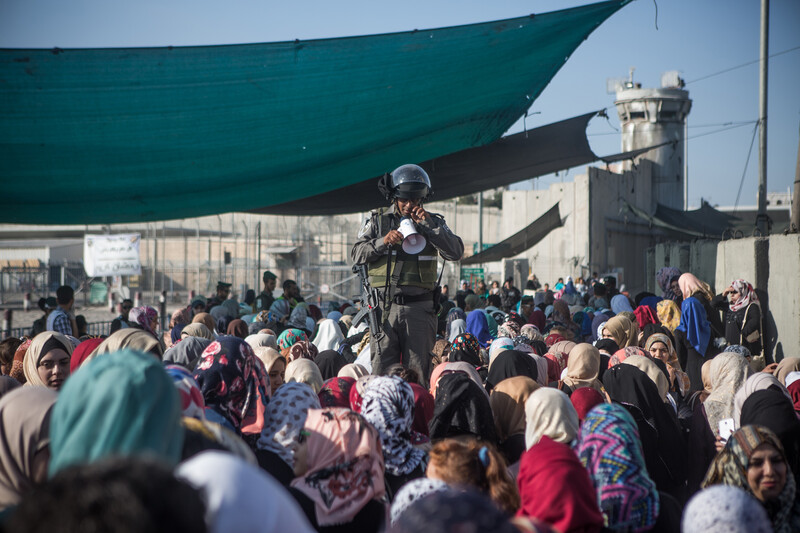
Palestinians cross the Qalandiya checkpoint near the West Bank city of Ramallah on their way to pray at al-Aqsa mosque in Jerusalem on the third Friday of the month of Ramadan, 3 July.
ActiveStills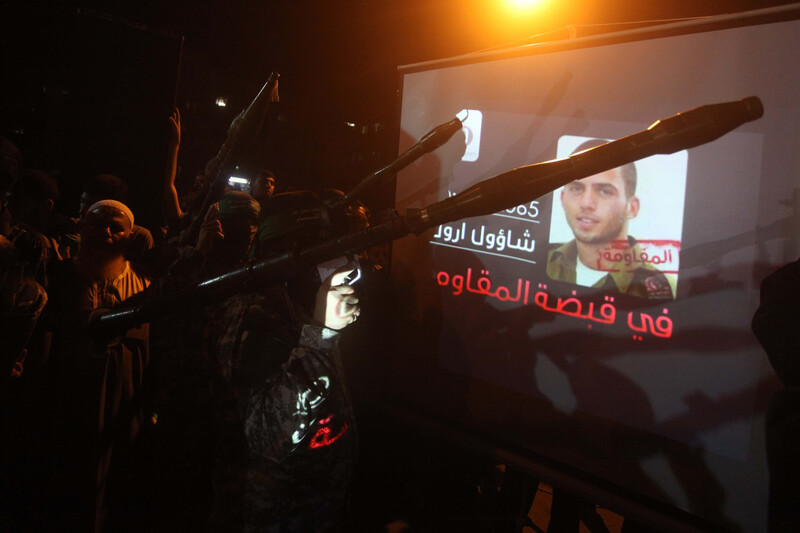
Fighters with the Qassam Brigades display a photo of an Israeli soldier killed in Gaza last summer during a march marking the first anniversary of the 51-day assault, Gaza City, 8 July. Last month Israel lifted a gag order on the recent disappearance of two of its citizens in Gaza.
APA images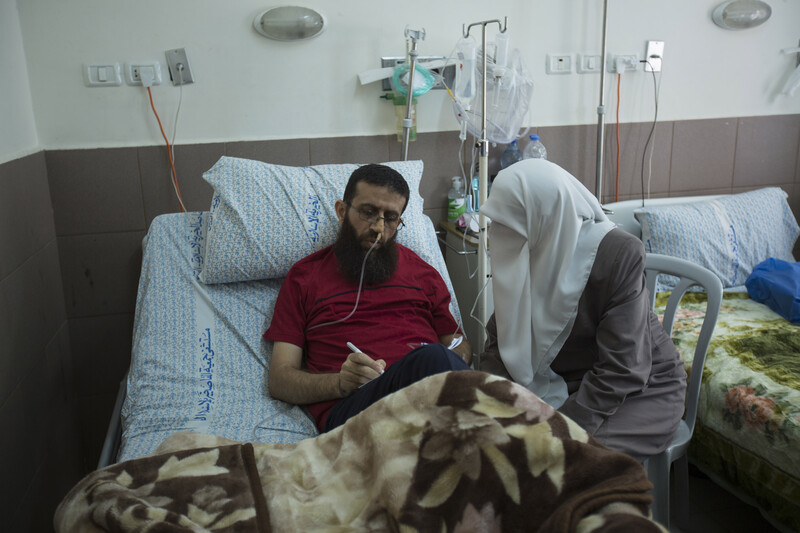
Khader Adnan, who endured a 55-day hunger strike in Israeli prison, is treated in Makassed hospital in East Jerusalem in the company his wife Randa on 16 July, days after his release.
ActiveStills
Palestinian women enjoy the Mediterranean Sea during the second day of the Eid al-Fitr holiday as the sun sets in Jaffa, 18 July. Israeli authorities issued thousands of permits for Palestinians living in the occupied West Bank, allowing them to visit present-day Israel during the three-day holiday that marks the end of Ramadan.
ActiveStills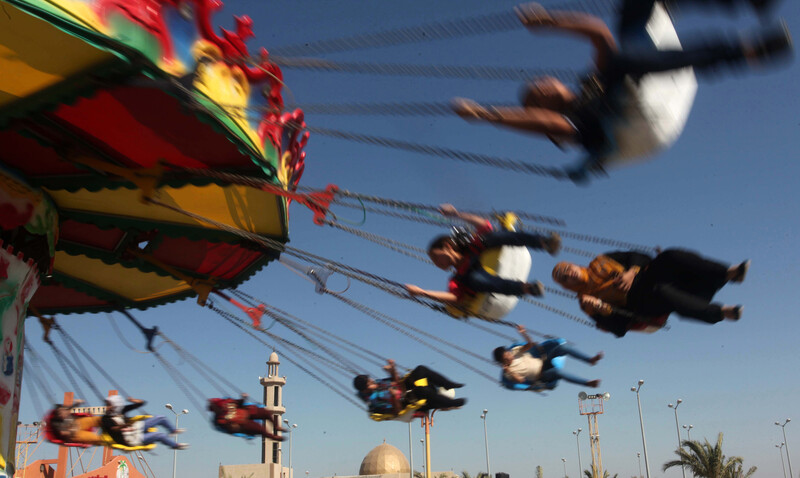
Palestinians take a ride at a Gaza City amusement park during the Eid al-Fitr holiday which marks the end of the month of Ramadan, 19 July.
APA images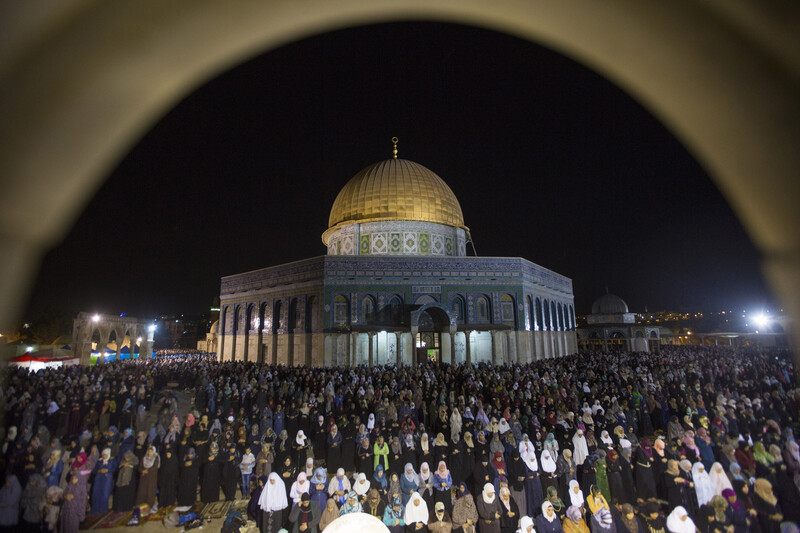
Palestinian worshippers pray during Lailat al-Qadr outside the Dome of the Rock in the al-Aqsa mosque compound in Jerusalem’s Old City on 13 July. In the Islamic tradition, Lailat al-Qadr, which falls during of the month of Ramadan, marks the night that the first verses of the Quran were revealed to the Prophet Muhammad.
ActiveStills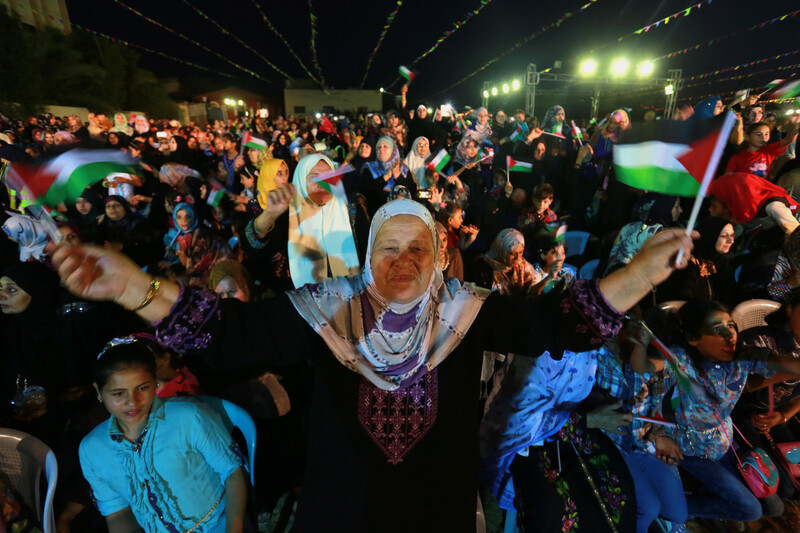
Palestinians celebrate during a mass wedding funded by a charity for 150 couples in Beit Lahiya, northern Gaza Strip, on 20 July.
APA images
Palestinian, Israeli and international activists march next to the village of Susiya to protest its threatened demolition and the forced transfer of its residents, South Hebron Hills, West Bank, 24 July.
ActiveStills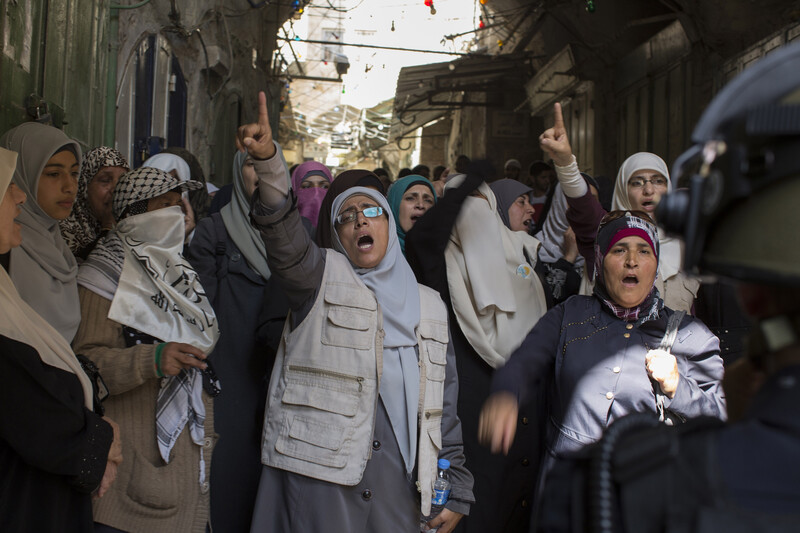
Palestinian women confront Israeli police forces at an entrance to the al-Aqsa mosque compound in Jerusalem’s Old City on 26 July after Israel limited Palestinian access to the holy site following clashes inside the compound.
ActiveStills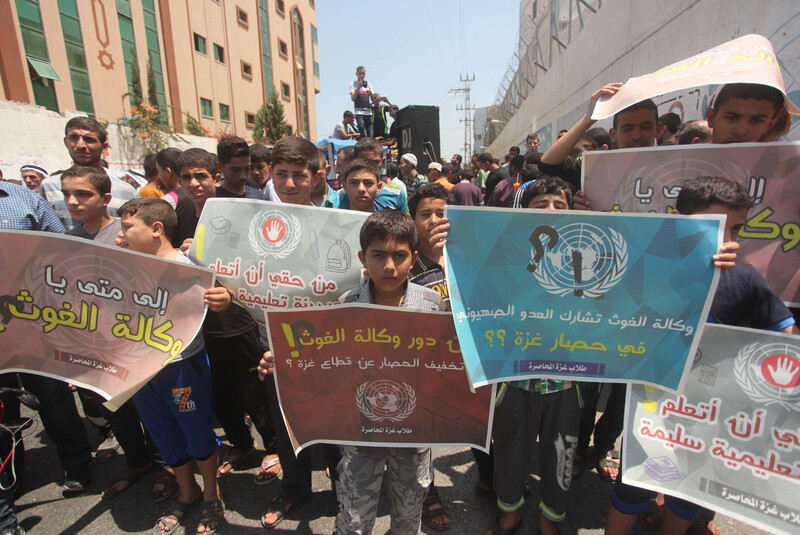
Palestinians protest cuts in services outside the offices of UNRWA, the United Nations agency for refugees, in Gaza City on 26 July. UNRWA warned last month that a funding deficit of $101 million could force the agency to delay the start of the academic year in some 700 schools for half a million students across the Middle East.
APA images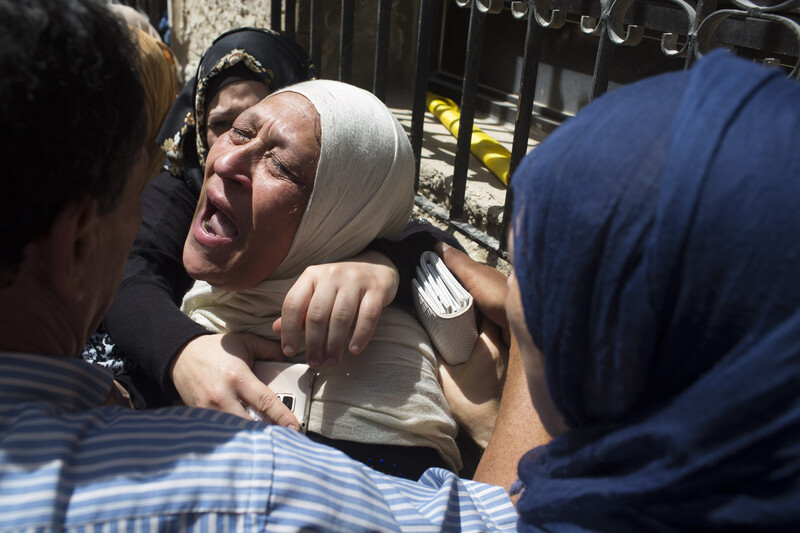
The aunt of Mohammad Abu Latifa reacts during the youth’s funeral in Qalandiya refugee camp near the West Bank city of Ramallah on 27 July. The teen’s family say Abu Latifa was shot and killed by the Israeli military, which claimed that he died after falling from a rooftop.
ActiveStills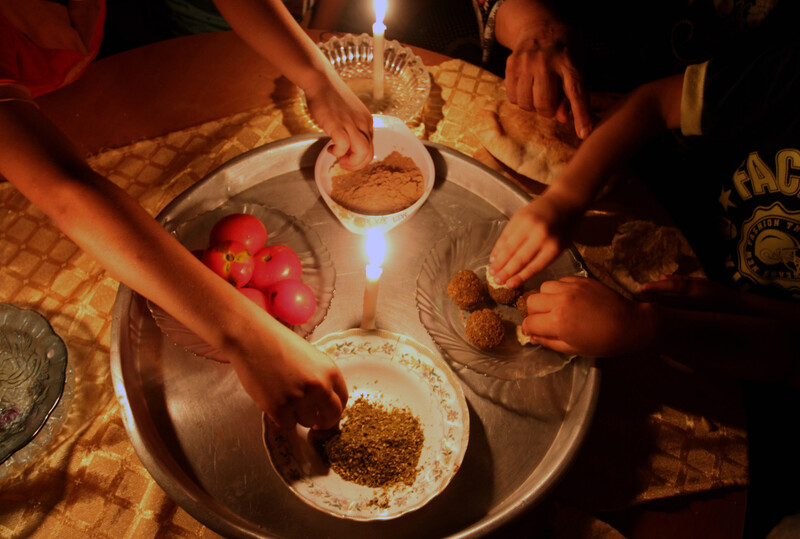
A Palestinian family dines by candlelight during a power cut in Rafah, southern Gaza Strip, on 28 July. Many Gaza households had only a few hours of electricity per day last month.
APA images
Students of the University College of Applied Sciences celebrate at their commencement in Gaza City on 28 July.
APA images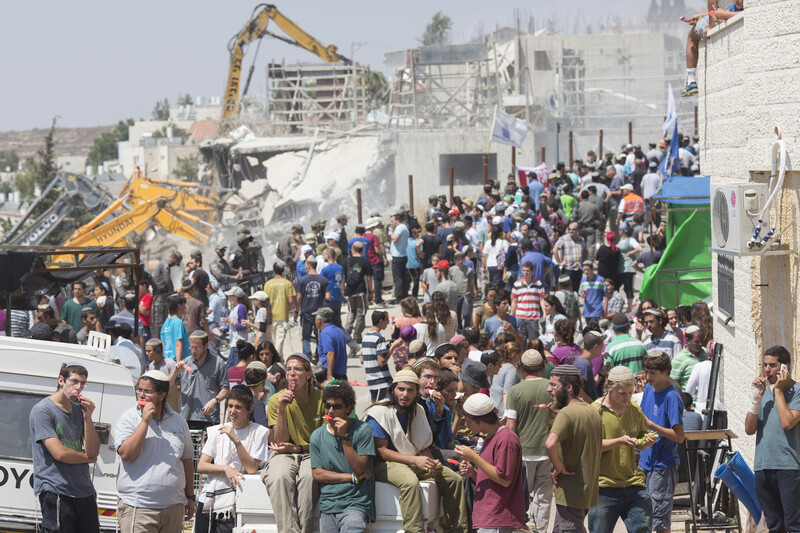
Israeli settlers watch as bulldozers demolish a building in Beit El settlement north of Ramallah in the occupied West Bank on 29 July, per an Israeli high court order.
ActiveStills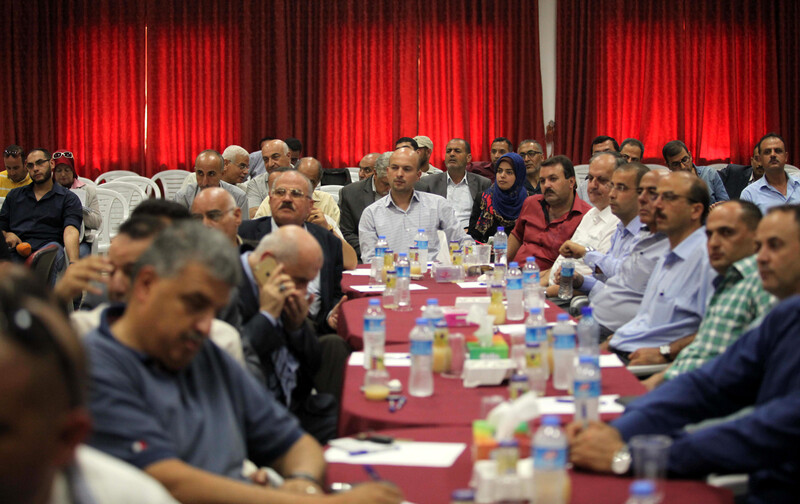
Palestinian businesspeople from the West Bank and Gaza Strip attend a meeting in Gaza City on 29 July. A delegation of 115 businesspeople representing private sector institutions in the West Bank traveled to Gaza to enhance economic and commercial cooperation between the territories, which are geographically separated by Israel and Palestinians are unable to travel between them without Israeli permission.
APA images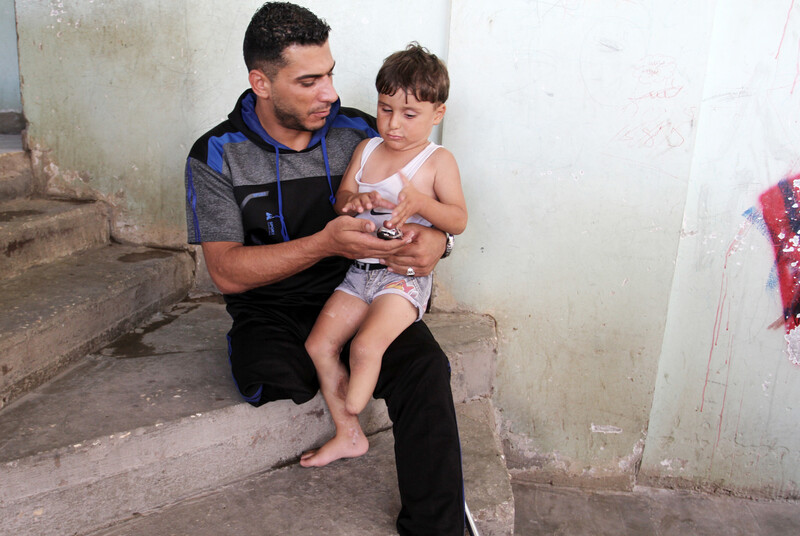
Wael al-Namla and his son Sharif, who were both injured during Israel’s 51-day attack on Gaza last summer, at their house in Rafah, southern Gaza Strip, on 30 July. The father and son were injured during a massive assault on Rafah on 1 August, which Palestinians have termed “Black Friday.” A joint investigation by Amnesty International and Forensic Architecture released last month found “strong evidence” that Israel committed war crimes during that attack.
APA images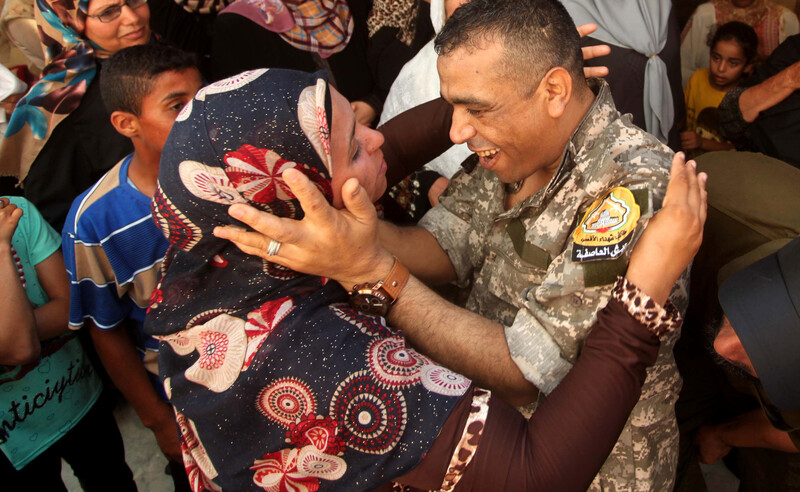
Mahmoud Abu Amra is welcomed by a relative upon his release from Israeli prison, Deir al-Balah, central Gaza Strip, 30 July. Abu Amra was imprisoned for 12 years after he was convicted of being a member of Fatah’s armed wing and for taking part in resistance against the Israeli army, according to his family.
APA images

